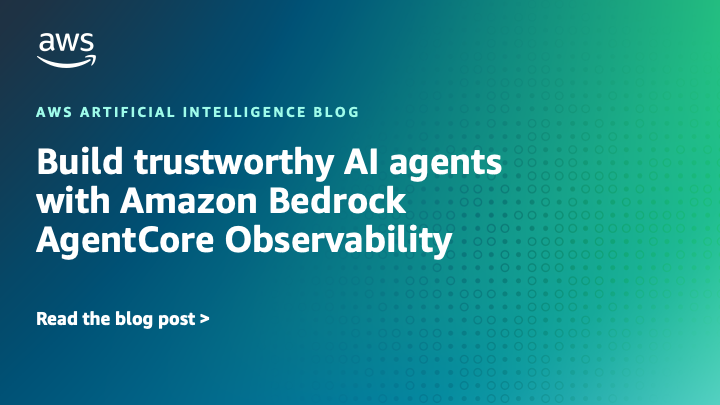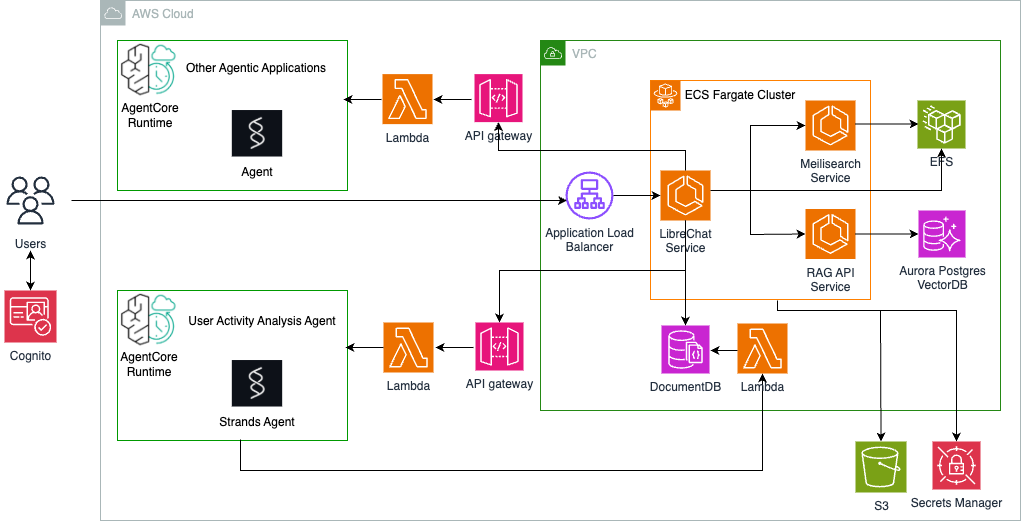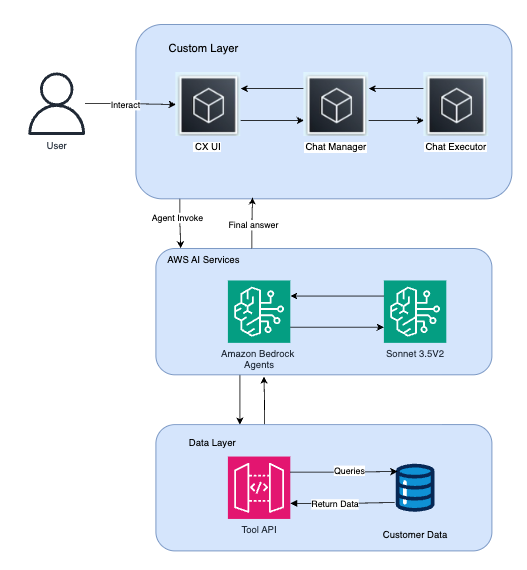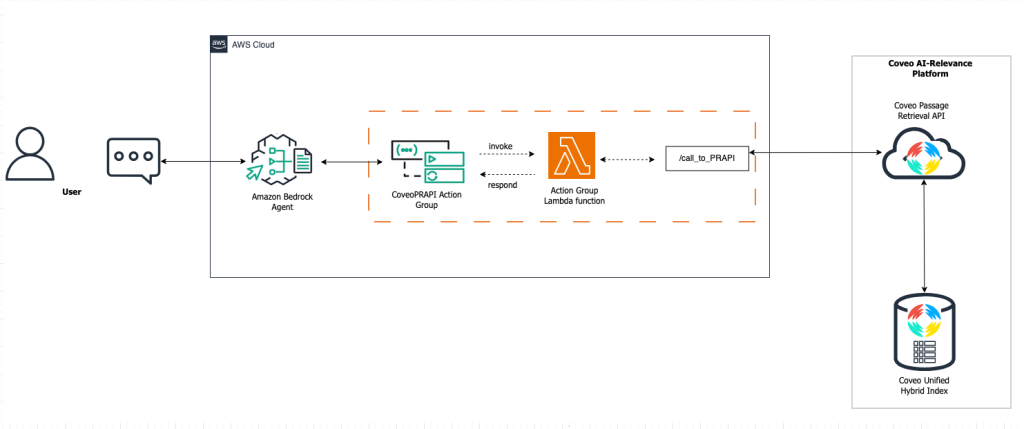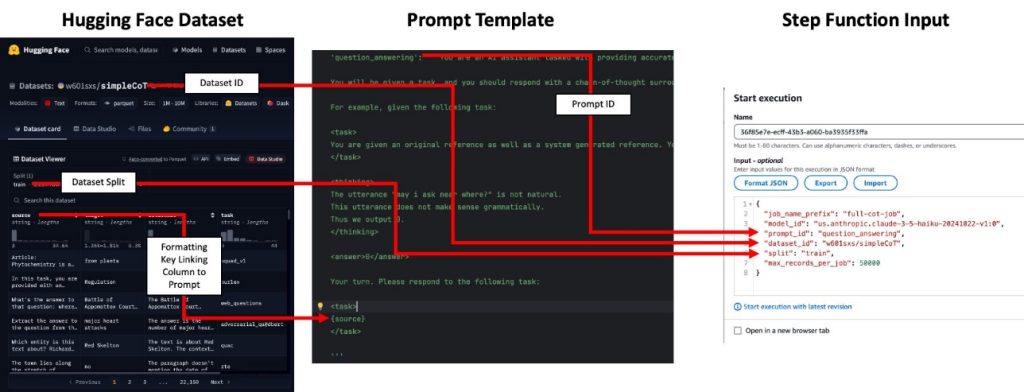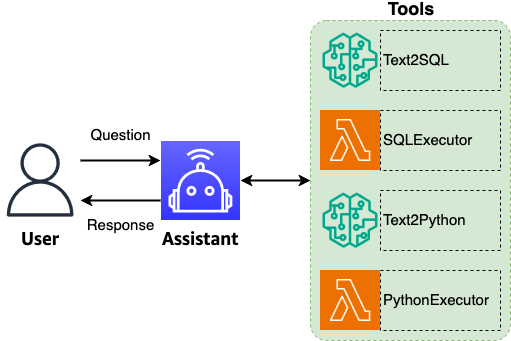Artificial Intelligence
Category: Amazon Machine Learning
Build trustworthy AI agents with Amazon Bedrock AgentCore Observability
In this post, we walk you through implementation options for both agents hosted on Amazon Bedrock AgentCore Runtime and agents hosted on other services like Amazon Elastic Compute Cloud (Amazon EC2), Amazon Elastic Kubernetes Service (Amazon EKS), AWS Lambda, or alternative cloud providers. We also share best practices for incorporating observability throughout the development lifecycle.
Build and scale adoption of AI agents for education with Strands Agents, Amazon Bedrock AgentCore, and LibreChat
This post demonstrates how to quickly build sophisticated AI agents using Strands Agents, scale them reliably with Amazon Bedrock AgentCore, and make them accessible through LibreChat’s familiar interface to drive immediate user adoption across your institution.
Skai uses Amazon Bedrock Agents to significantly improve customer insights by revolutionized data access and analysis
Skai (formerly Kenshoo) is an AI-driven omnichannel advertising and analytics platform designed for brands and agencies to plan, launch, optimize, and measure paid media across search, social, retail media marketplaces and other “walled-garden” channels from a single interface. In this post, we share how Skai used Amazon Bedrock Agents to improve data access and analysis and improve customer insights.
The power of AI in driving personalized product discovery at Snoonu
In this post, we share how Snoonu, a leading ecommerce platform in the Middle East, transformed their product discovery experience using AI-powered personalization. In this post, we share how Snoonu, a leading ecommerce platform in the Middle East, transformed their product discovery experience using AI-powered personalization.
Exploring the Real-Time Race Track with Amazon Nova
This post explores the Real-Time Race Track (RTRT), an interactive experience built using Amazon Nova in Amazon Bedrock, that lets fans design, customize, and share their own racing circuits. We highlight how generative AI capabilities come together to deliver strategic racing insights such as pit timing and tire choices, and interactive features like an AI voice assistant and a retro-style racing poster.
Build character consistent storyboards using Amazon Nova in Amazon Bedrock – Part 2
In this post, we take an animated short film, Picchu, produced by FuzzyPixel from Amazon Web Services (AWS), prepare training data by extracting key character frames, and fine-tune a character-consistent model for the main character Mayu and her mother, so we can quickly generate storyboard concepts for new sequels like the following images.
Build character consistent storyboards using Amazon Nova in Amazon Bedrock – Part 1
The art of storyboarding stands as the cornerstone of modern content creation, weaving its essential role through filmmaking, animation, advertising, and UX design. Though traditionally, creators have relied on hand-drawn sequential illustrations to map their narratives, today’s AI foundation models (FMs) are transforming this landscape. FMs like Amazon Nova Canvas and Amazon Nova Reel offer […]
Enhancing LLM accuracy with Coveo Passage Retrieval on Amazon Bedrock
In this post, we show how to deploy Coveo’s Passage Retrieval API as an Amazon Bedrock Agents action group to enhance response accuracy, so Coveo users can use their current index to rapidly deploy new generative experiences across their organization.
Build a serverless Amazon Bedrock batch job orchestration workflow using AWS Step Functions
In this post, we introduce a flexible and scalable solution that simplifies the batch inference workflow. This solution provides a highly scalable approach to managing your FM batch inference needs, such as generating embeddings for millions of documents or running custom evaluation or completion tasks with large datasets.
Natural language-based database analytics with Amazon Nova
In this post, we explore how natural language database analytics can revolutionize the way organizations interact with their structured data through the power of large language model (LLM) agents. Natural language interfaces to databases have long been a goal in data management. Agents enhance database analytics by breaking down complex queries into explicit, verifiable reasoning steps and enabling self-correction through validation loops that can catch errors, analyze failures, and refine queries until they accurately match user intent and schema requirements.
